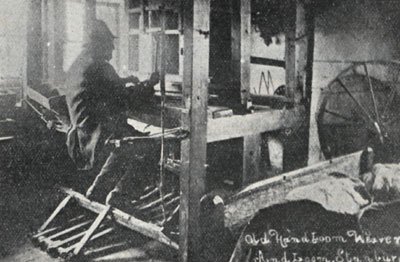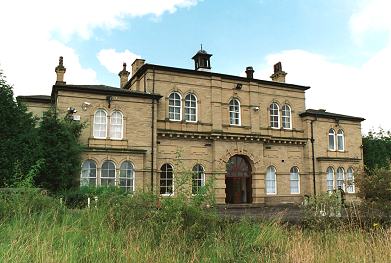Entry #14

Illustrated History from Hipperholme to Tong James Parker, 1904 – also postcard collection of Maggie Land Blanck: Weaving in Yorkshire
Nathan Hainsworth (b. 15 June 1792) was a weaver from Thornton, Bradford, West Yorkshire, England to James Hainsworth and Mary (unknown). He is my husband’s third great grandfather and a contemporary of William Hartley, my husband’s black sheep, Australian convict ancestor. Nathan was documented as a worsted weaver in the 1841 census and the 1851 census confirmed that he was a hand loom weaver. Hand loom weaving in Northern England peaked between 1795 and 1805, so it seems that Nathan’s timing was dubious for entering this profession. With the advent of the industrial revolution, hand loom weaving became a career path to poverty and financial ruin. The textile industry in Northern England was a major contributor to the economy and chances are that Nathan learned the skill of hand loom weaving from his father. In barely one generation, the creation of wool textiles shifted from being a skilled handcraft to being milled in large factories with equipment running on steam power. In 1837, the Royal Commission on Hand-Loom Weavers was established in the United Kingdom to enquire into unemployment and poverty in the textile industry. An excellent summary of the weaving trade during this time period can be read online in From Weaver to Web.
Nathan Hainsworth married Sarah “Sally” Jowett in 1816 and they appear to have had eight children between 1816 and 1835. The Hainsworths were contributors to a boom in population that saw small market towns like Halifax nearly triple in size within 50 years. Seven of the offspring were daughters, including my husband’s two times great-grandmother, Mary Ann Hainsworth Hartley. The 1841 census describe that Mary Ann “goes to the mill” at age 16. Mary Ann Hainsworth married Frederick Hartely ten years later and in 1853 they emigrated to the United States where they settled in Philadelphia, Pennsylvania.
Nathan was shown in the 1851 census with a marital status of married, but neither Sally, nor any of the children were with him. By 1861, when Nathan was 68 years of age, he was shown in the census as a farm labourer and a widower. Apparently, he was no longer able to make a living at weaving. It is not clear whether he was affected by infirmity or if he never made a transition to factory work, but he was never again identified as a weaver. At any rate, his life seems to have been one of spiraling decline for he ended his days in the North Bierley Union Workhouse where he appears as an entry in the 1871 census at age 79. The workhouse was the place of last resort for the elderly who had no family willing or able to care for them, and Nathan was surrounded by inmates who were deemed to be “lunatics” and “idiots.” Nathan died in 1873 and it seems likely that he was impoverished and alone.

North Bierley Union Workhouse